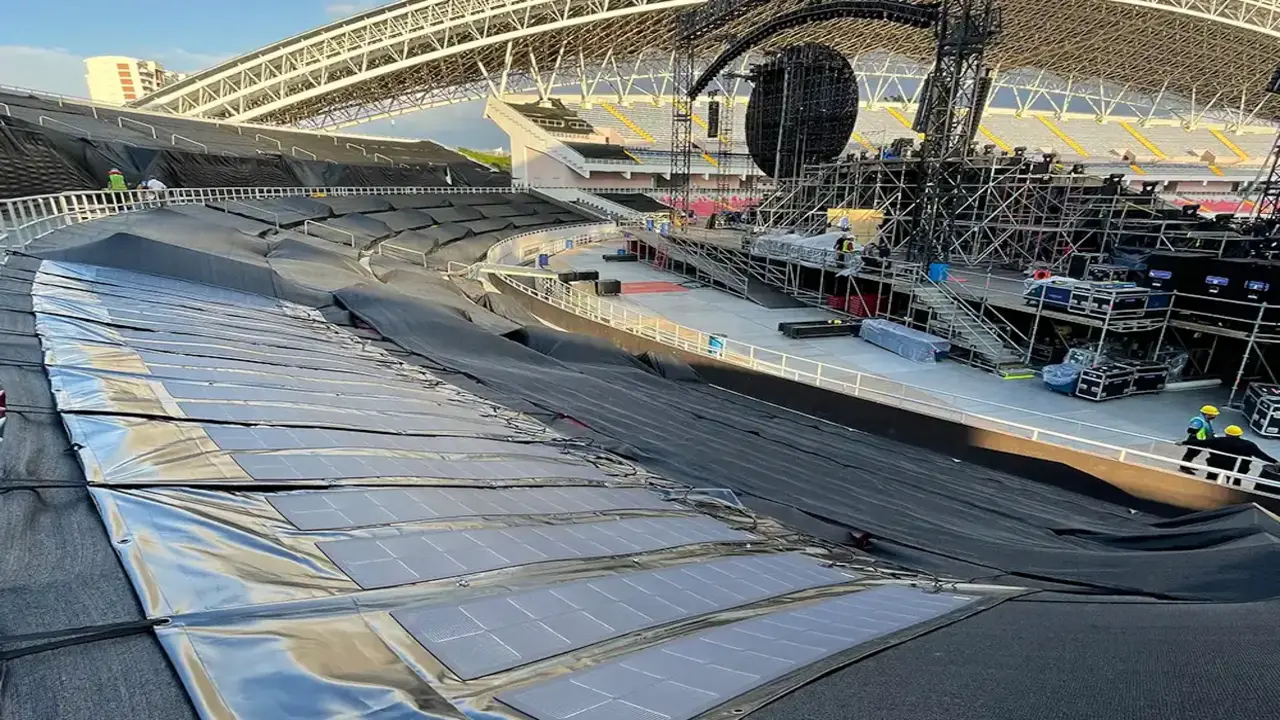At Coldplay’s concert at Stanford Stadium in the US, the energy needs of the backstage and C-stage were met for the first time with printed, organic solar panels. Developed by Australia-based Kardinia Energy, this technology is one of the largest-scale mobile solar power applications ever implemented for live events. Following an experimental phase, it is now moving into commercial production.
Coldplay prepares to use solar panels at their concert
The system used consists of a total of 550 square meters of printed film. The film weighs just 300 grams per square meter and can be transported in roll form. The installation process can be completed in less than two hours by a two-person team. Coldplay previously tested this system at smaller concerts for 18 months. This is the first time the new system has been fully utilized at a large-scale stage performance.

The technology is based on the principle of printing carbon-based semiconductor polymers, rather than silicon, onto plastic substrates. No special machinery was required for this printing process. A converted wine label printer was incorporated into the production center.
Although these panels are less efficient than traditional silicon panels, their advantages appeal to a different target audience. Their lightweight construction and flexible design make them suitable for use outside of fixed structures. Stadiums, warehouses, temporary stages, and disaster areas, where installation is required quickly, are among the primary applications for this technology.
The energy collected by the panels used in Coldplay’s concerts is stored in batteries to power stage equipment and lighting. The system has been implemented in 21 stadiums across 19 countries to date. The goal of zero emissions for each concert was achieved, and the installations eliminated the use of fossil fuel-powered generators.
Developer Kardinia Energy received a $2.25 million grant following this collaboration with Coldplay. With this investment, the company plans to establish the world’s first commercial printed solar panel production facility.
The technology’s cost advantage is also noteworthy. According to Kardinia’s data, these panels can be produced at approximately ten times the cost of their silicon-based counterparts. However, generating the same amount of energy requires four times the surface area.
Coldplay plans to continue using printed solar panels as part of their world tour until the end of 2025. During this period, the system’s performance in different geographies and climate conditions will continue to be monitored. With the company’s commercial production phase, a new energy solution for a wide range of applications, from concert stages to disaster zones, is emerging.













